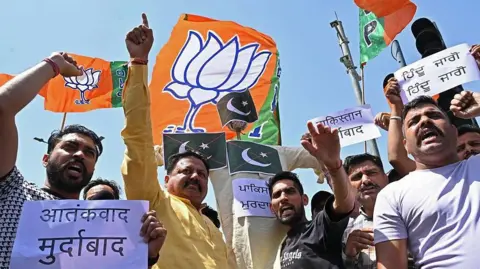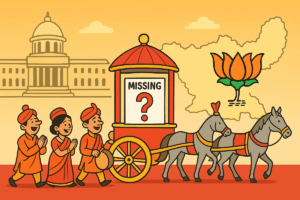Pahalgam Attack: India’s Calculated Response to Kashmir Killings

The recent attack in Pahalgam, where 26 tourists lost their lives, represents a significant escalation in violence within Indian-administered Kashmir, a region fraught with historical tensions. As the deadliest militant attack in the area since 2019, this incident has not only claimed innocent lives but has also threatened the fragile sense of normalcy the Indian government has long attempted to cultivate in this disputed region.
### Immediate Reactions
In the attack’s aftermath, India has swiftly taken diplomatic and strategic steps, including closing the main border crossing with Pakistan, suspending a critical water-sharing treaty, and expelling diplomats. Such measures signal India’s intent to assert pressure on Pakistan, which it accuses of complicity in facilitating the militants responsible for the attack.
Defense Minister Rajnath Singh’s pledge for a “strong response” further underscores the seriousness with which India is approaching this situation. The response alludes not just to retaliation against the direct perpetrators, but also a crackdown on those orchestrating acts of terror within Indian borders.
### Military Options
Historically, India has opted for strategic military retaliations in similar contexts. After the Uri attack in 2016 and the Pulwama attack in 2019, India responded with cross-border “surgical strikes” and airstrikes within Pakistan’s territory, actions that escalated military confrontations without leading to full-scale war.
According to military experts like Srinath Raghavan, the current climate sets the stage for another possibly robust military response, likely involving cross-border measures. However, any military action carries a significant risk of miscalculation, potentially escalating into a broader conflict given the nuclear capabilities of both nations.
### Strategic Calculations
India must weigh its response carefully, balancing domestic political pressures with the inherent risks of escalating military conflict. While tactical advantages could be gained by neutralizing terrorist threats and restoring deterrence, the risk of spiraling into a grave crisis remains substantial. Analysts highlight the complex interplay of security dynamics and political calculations, particularly given past experiences and existing military doctrines.
### The Global Implications
One of the gravest concerns is the international dimension, with both India and Pakistan being nuclear-armed states. This global context requires both nations to exercise caution in their military strategies to avoid unintended escalation. The role of international mediators might be limited due to geopolitical distractions, further complicating potential crisis management avenues.
### Moving Forward
While military retaliation seems imminent, India must also address underlying security gaps that allowed such a significant breach at the peak of tourist season. Strengthening internal security measures within the Union Territory is crucial to preventing future attacks and ensuring the safety of civilians.
The Pahalgam attack underscores the persistent volatility in Kashmir, where political, social, and military factors converge to challenge both peace and security. As India prepares its next steps, maintaining a balanced yet firm stance will be essential to navigating the complexities of this enduring conflict.









